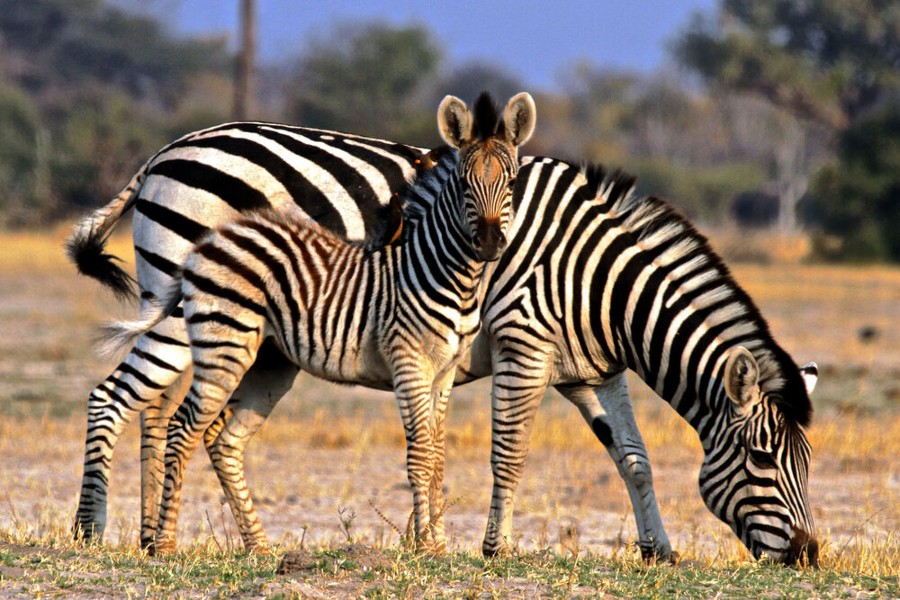
By Tatum-Lee Louw
Hwange National Park is the largest game reserve in Zimbabwe, covering an area of over 14,600 square kilometers.
The park is significant for its rich biodiversity and is home to over 100 species of mammals, including the Big Five (elephant, rhino, buffalo, lion, and leopard), as well as over 400 species of birds.
Hwange National Park also has one of the largest elephant populations in the world, with over 44,000 elephants recorded in the park. Additionally, the park is home to many endangered and rare species, such as the African wild dog, cheetah, and sable antelope. The park is an important conservation area, and efforts are being made to protect its wildlife and ecosystems from human activities such as poaching, hunting, and deforestation.
Overall, Hwange National Park is a must-visit destination for anyone interested in wildlife and adventure. With its diverse wildlife, stunning landscapes, and rich cultural heritage, it offers visitors a truly unforgettable experience.
Wildlife in Hwange National Park
Hwange National Park is home to a diverse range of wildlife, including over 100 species of mammals and 400 species of birds. Some of the notable wildlife species that can be found in the park include:
- Elephants: Hwange National Park has one of the largest elephant populations in the world, with over 44,000 elephants recorded in the park.
- Lions: The park is also home to a large number of lions, which can often be spotted lounging in the grasslands.
- Leopards: Leopards are also present in the park, but are more elusive than lions.
- African wild dogs: Hwange National Park is one of the best places to see the endangered African wild dog, which hunts in packs.
- Buffalo: The park has a large population of African buffalo, which can be seen grazing in large herds.
- Giraffes: Giraffes are also common in the park, with their long necks easily visible above the trees.
- Zebras: The park has both plains and mountain zebras, which can be distinguished by their stripes.
- Cheetahs: While cheetahs are less common in Hwange National Park, they can still be spotted on occasion.
Climate in Hwange National Park
Hwange National Park has a semi-arid climate, with hot and dry conditions for most of the year. The park experiences two distinct seasons – a dry season from May to October and a wet season from November to April.
During the dry season, temperatures can reach up to 30°C during the day and drop to around 10°C at night. This is the best time to visit the park for wildlife viewing, as animals congregate around watering holes, making them easier to spot. The dry season is also the most comfortable time to visit, with lower humidity and fewer insects.
In contrast, the wet season brings higher temperatures and humidity, with afternoon thunderstorms common. The park is lush and green during this time, and many migratory bird species can be seen. However, wildlife viewing can be more challenging as animals disperse throughout the park, and some roads may become impassable due to heavy rainfall.
What to Pack on a Safari to Hwange National Park?
Packing for a safari to Hwange National Park requires some careful planning to ensure that you are comfortable and prepared for the various activities and weather conditions. Here are some essential items to pack for your safari:
- Lightweight and breathable clothing: Pack comfortable, lightweight clothing in neutral colors that can blend in with the environment. Long-sleeved shirts and pants can protect you from the sun and insects, while breathable fabrics such as cotton or linen will keep you cool.
- Comfortable walking shoes: You will likely be doing a lot of walking during your safari, so comfortable and sturdy walking shoes or boots are a must. Closed-toe shoes are recommended to protect your feet from thorns and other hazards.
- Sun protection: Bring a wide-brimmed hat, sunglasses, and a high SPF sunscreen to protect your skin from the strong African sun.
- Insect repellent: Hwange National Park is home to many insects, including mosquitoes, so be sure to pack a strong insect repellent.
- Binoculars and camera: A good pair of binoculars and a camera are essential for wildlife viewing and capturing memories of your safari.
- Waterproof jacket or poncho: Even during the dry season, afternoon thunderstorms can occur, so bring a waterproof jacket or poncho to stay dry.
- Personal medications: If you take any medications, be sure to pack enough for your entire trip, including any necessary prescriptions or documentation.
- Cash and passport: Bring some cash in local currency and your passport for any necessary transactions or travel documentation.
By packing these essential items, you’ll be prepared to enjoy all that Hwange National Park has to offer and make the most of your safari experience.
HWM Partner.
- Salters Scene: EatOkra Culinary Creatives Conference 2024
- Sponsored Love: Enhancing Your Workspace By Finding The Best Executive Office Design For Your Office in Philippines
- Sponsored Love: Choosing The Perfect Must-Have Executive Office Furniture in Philippines
- Op-Ed: The Capital One And Discover Merger Would Inject Competition Into A Market Long Dominated By A Handful Of Giants
- Sponsored Love: Step Into Speed With Used Ferrari Cars For Sale
Become a Harlem Insider!
By submitting this form, you are consenting to receive marketing emails from: . You can revoke your consent to receive emails at any time by using the SafeUnsubscribe® link, found at the bottom of every email. Emails are serviced by Constant Contact









